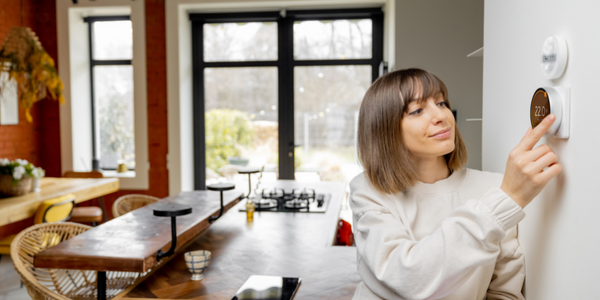µź╝Õ«ćĶć¬ÕŖ©Õī¢õĖÄµÄ¦ÕłČ

- ĶāĮµ║É
- ń╗┤µŖż
- õ║¦ÕōüÕ╝ĆÕÅæ
2016 Õ╣┤µź╝Õ«ćĶć¬ÕŖ©Õī¢ń│╗ń╗¤ (BAS) ÕĖéÕ£║õ╗ĘÕĆ╝ 536.6 õ║┐ńŠÄÕģā’╝īķóäĶ«ĪÕł░ 2022 Õ╣┤Õ░åĶŠŠÕł░ 991.1 õ║┐ńŠÄÕģā’╝ī2017 Õ╣┤Ķć│ 2022 Õ╣┤ńÜäÕżŹÕÉłÕ╣┤Õó×ķĢ┐ńÄćõĖ║ 10.73%
ĶĄäµ¢ÖµØźµ║É’╝Ü ÕĖéÕ£║õĖÄÕĖéÕ£║
2017 Õ╣┤µĢ┤õĮōµÖ║ĶāĮńģ¦µśÄÕĖéÕ£║õ╗ĘÕĆ╝ 63.2 õ║┐ńŠÄÕģā’╝īķóäĶ«ĪÕł░ 2023 Õ╣┤Õ░åĶŠŠÕł░ 209.8 õ║┐ńŠÄÕģā’╝īķó䵥ŗµ£¤ÕåģÕżŹÕÉłÕ╣┤Õó×ķĢ┐ńÄćõĖ║ 21.50%ŃĆé
ĶĄäµ¢ÖµØźµ║É’╝Ü ÕĖéÕ£║õĖÄÕĖéÕ£║
BACSń│╗ń╗¤ńÜäµĀĖÕ┐āÕŖ¤ĶāĮµś»õ╗Ćõ╣ł’╝¤
- õ┐صīüÕ»╣Õ╗║ńŁæńē®ńÄ»ÕóāńÜäµÄ¦ÕłČ
- µĀ╣µŹ«ÕŹĀńö©ńÄćÕÆīĶāĮµ║Éķ£Ćµ▒éĶ┐ÉĶĪīń│╗ń╗¤
- ńøæµÄ¦ÕÆīń║ĀµŁŻń│╗ń╗¤ńÜäµĆ¦ĶāĮ
- µĀ╣µŹ«ķ£ĆĶ”üÕÅæÕć║ÕŻ░ķ¤│ĶŁ”µŖź
BACS ÕÅ»õ╗źµÄ¦ÕłČÕō¬õ║øĶ«Šµ¢Į’╝¤
µ£║µó░ń│╗ń╗¤ŃĆüń«ĪķüōŃĆüńöĄµ░öń│╗ń╗¤ŃĆüõŠøµÜ¢ŃĆüķĆÜķŻÄÕÆīń®║Ķ░ā (HVAC)ŃĆüńģ¦µśÄµÄ¦ÕłČŃĆüÕ«ēÕģ©ÕÆīńøæĶ¦åŃĆüĶŁ”µŖźÕÆīńöĄµó»ŃĆé
Õō¬õ║øõ╝Āµä¤ÕÖ©ķĆÜÕĖĖńö©õ║ÄÕÉæńē®ĶüöńĮæń│╗ń╗¤µÅÉõŠøµĢ░µŹ«’╝īÕō¬õ║øÕøĀń┤ĀÕ«Üõ╣ēõ║åÕ«āõ╗¼ńÜäķā©ńĮ▓’╝¤
õĮÄÕŖ¤ńÄ浳¢ĶāĮķćŵöČķøåŃĆüÕŠ«Õ×ŗŃĆüÕ«ēÕģ©ÕÆīÕżÜÕŖ¤ĶāĮńÜäõ╝Āµä¤ÕÖ©ÕÅ»õ╗źķÖŹõĮÄĶĄäµ£¼µö»Õć║ŃĆüķÖŹõĮÄń╗┤µŖżµłÉµ£¼ÕÆīµø┤Õ«╣µśōķā©ńĮ▓ŃĆéµØźĶć¬õ╝Āµä¤ÕÖ©ńÜäµĢ░µŹ«ķĆÜĶ┐浌ĀµĢ░õĖōµ£ēÕÆīÕ╝ƵöŠÕŹÅĶ««ķĆÜĶ┐ćĶĘ»ńö▒ÕÖ©ŃĆüńĮæÕģ│ŃĆüĶŖéńé╣ÕÆīĶŠ╣ń╝śĶ«Īń«Śµ£║Ķ┐øĶĪīĶĮ¼µŹóÕÆīõ╝ĀĶŠōŃĆéńĮæÕģ│ĶĮ¼µŹóÕÆīµĪźµÄźÕŹÅĶ««’╝īÕ╣ČķĆÜĶ┐ćõĖŁÕż«ÕĘźõĮ£ń½ÖÕÆīń¦╗ÕŖ©Ķ«ŠÕżćÕ«×ńÄ░Õ»╣Õ╗║ńŁæńē®ńÜäÕåģķā©µÄ¦ÕłČŃĆé
Õō¬õ║øÕøĀń┤ĀÕ«Üõ╣ēõ║åńö©õ║ÄķøåµłÉńÜäõ║æÕÆīĶŠ╣ń╝śÕ╣│ÕÅ░’╝¤
ńĮæÕģ│Ķ┐śķĆÜĶ┐ćĶ£éń¬Øµł¢õ╗źÕż¬ńĮæĶ┐׵ğÕ░åÕ╗║ńŁæńē®Ķ┐×µÄźÕł░õ║æŃĆéõ║æµö»µīüĶ┐£ń©ŗĶ«┐ķŚ«ŃĆüµø┤ķ½śń║¦Õł½ńÜäÕłåµ×Éõ╗źÕÅŖõĖÄńöĄńĮæÕÆīÕŠ«ńöĄńĮæńÜäķĆÜõ┐ĪŃĆé
BACS ńÜäÕ¤║µ£¼ń╗䵳Éķā©Õłåµś»õ╗Ćõ╣ł’╝¤
õ╝Āµä¤ÕÖ©’╝ܵĄŗķćŵĖ®Õ║”ŃĆüµ╣┐Õ║”ŃĆüńģ¦µśÄµ░┤Õ╣│ŃĆüµł┐ķŚ┤ÕŹĀńö©ńÄćńŁēÕĆ╝ŃĆé
µÄ¦ÕłČÕÖ©’╝ÜõĮ┐ńö©Õ║öńö©ķĆ╗ĶŠæÕÆīÕÅæķĆüÕæĮõ╗żńÜäń«Śµ│Ģ’╝īõ╗ĵöČķøåńÜäµĢ░µŹ«õĖŁµ┐ĆÕÅæń│╗ń╗¤ńÜäÕōŹÕ║öŃĆé
ĶŠōÕć║Ķ«ŠÕżć’╝ܵē¦ĶĪīµØźĶć¬µÄ¦ÕłČÕÖ©ńÜäÕæĮõ╗żŃĆé
ķĆÜõ┐ĪÕŹÅĶ««’╝ÜBACS ń╗äõ╗ČõĮ┐ńö©ńÜäŌĆ£Ķ»ŁĶ©ĆŌĆØŃĆé
õ╗¬ĶĪ©µØ┐’╝Üńö©õ║ĵĢ░µŹ«µŖźÕæŖÕÆīõĖÄ BACS ń│╗ń╗¤õ║żõ║ÆńÜäńö©µłĘńĢīķØóŃĆé
Õō¬õ║øõĖÜÕŖĪµīæµłśõ╝ÜÕĮ▒ÕōŹķā©ńĮ▓’╝¤
ńö▒õ║Äń╗äń╗ćń╗ōµ×äÕÉäõĖŹńøĖÕÉī’╝īµēŠÕł░Ķ”üÕ«ēĶŻģńÜäµ£ĆõĮ│ń│╗ń╗¤ÕÆīõ╝Āµä¤ÕÖ©µś»õĖĆķĪ╣ÕĘ©Õż¦ńÜäµīæµłśŃĆéĶ┐Öµś»õĖ¬µĪłµāģÕåĄŃĆéÕÅ”õĖĆõĖ¬µīæµłśµś»Õģŗµ£ŹÕÅ»ĶāĮÕć║ńÄ░ńÜäµĮ£Õ£©Õ«ēÕģ©ķŚ«ķóśÕÆīķ½śķóØÕłØÕ¦ŗµŖĢĶĄäŃĆé
µĪłõŠŗńĀöń®Č.








